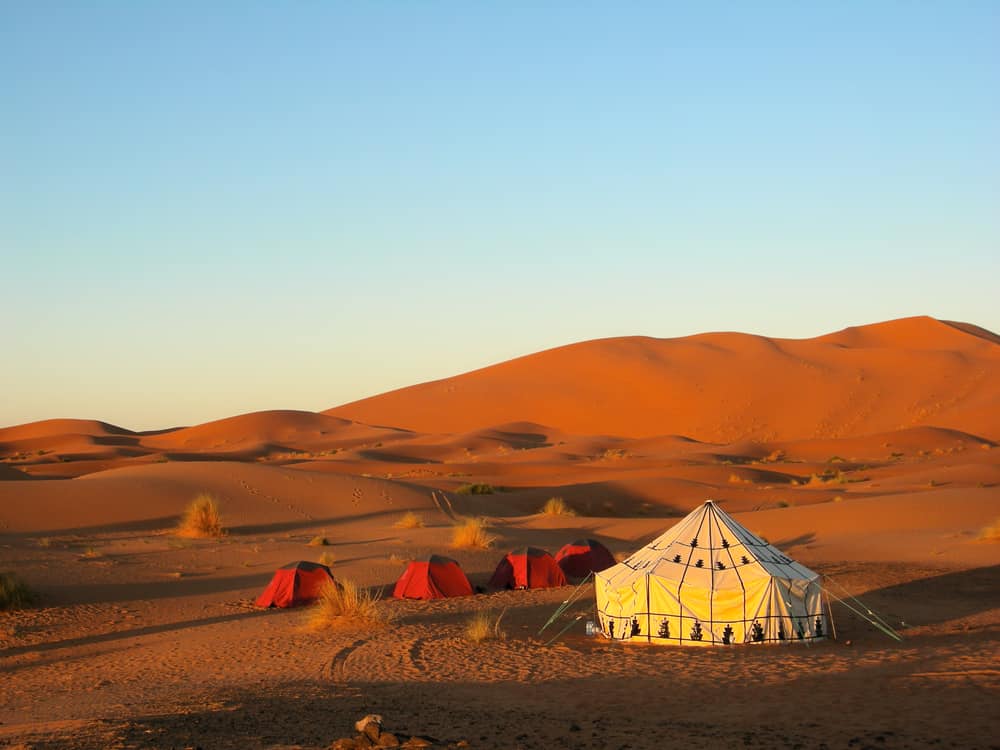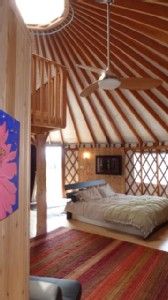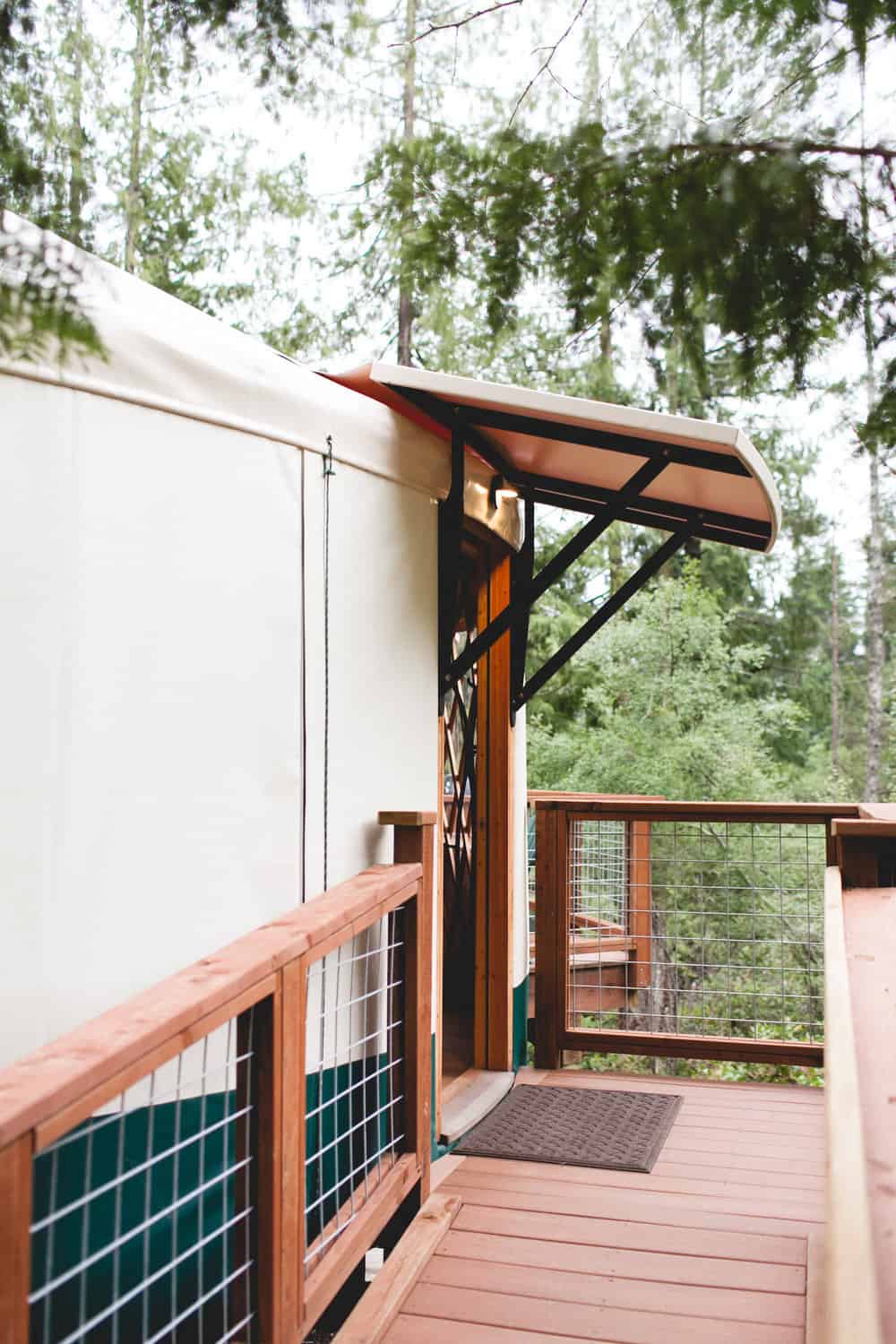
If you live in areas that experience summer climates, cooling off is important when the temperature rises. A good air conditioner can help you out big time with this. Here are some tips to help you pick a portable air conditioner that fits your needs and helps you keep the sweat down in hot weather.
The general consensus of these debates is that yurts are generally good for both hot and cold climates. Yurt living are certainly more sustainable and environmentally friendly than other housing options.
Accordingly, yurts are a great option for those who want to live a more sustainable lifestyle. However, there are a few things yurts owners should keep in mind when living in hot climates. First and foremost, make sure your yurt is well-insulated. This will help you stay cool during summer days and warm on cold winter nights. It’s also important to have adequate ventilation, so you can avoid getting too hot or too cold.
Because of their circular dome shape, yurts help to warm up and cool down as well as circulate natural air throughout the structure. This is especially beneficial in hot weather conditions where you might need to use the structure more often.
In this post, I will share with you various methods you can use to keep cool!
Table of Contents
Yurt Life in the Desert
If you’re thinking about living in a yurt, we can tell you that they make sense in many moderate climates and situations but what about extreme temperatures like the desert? I believe that’s no surprise to you, living in the middle of the desert in your yurt can be tricky. Fortunately, we can equip you with the know-how to live in the desert!
Preparing yourself for both hot and cold climates is essential as deserts can get really hot in the summer and as cold as Siberia in winter. To stay comfortable in hot and cold weather, it is important to have heavy-duty insulation which provides the R-value you will require. One good insulation would be EnerLayer™ insulation system that is ready to take on any climate, while being lightweight and easy to install. They use specially designed proprietary material that reduces one-third of heating and cooling requirements. If you are planning to build a yurt in a desert, keep a lookout for it.

The Key to a Cool Yurt
A yurt should be ventilated to help dissipate heat. The round shape and walls make it versatile to insert windows or vents on the yurts for air to enter your living space. It is even better if you have a simple yurt without partition to restrict airflow in all directions. More sustainable yurts use breathable materials, like organic cotton battings or wood shavings, to help air circulate and dissipate heat quickly. If you are interested in partitioning, do check out some of our yurt plans here.
Effective insulation is key for sustainable living in a yurt; many manufacturers use reflective insulation directly from the factory. Double-walled reflective insulation between the yurt skin and framework may help shade your home during warm weather months yurts are good for hot climates.
It will keep you nice and warm in the winter and cooler in the summer. More sustainable yurts use breathable materials, like organic cotton battings or wood shavings, to help air circulate and dissipate heat quickly. By using R-value to calculate insulation, you can get an idea of how effective the insulation is in managing heat gain and loss. The higher the R-value, the more efficient it will be in keeping you cool or warm.
To break it down further for you, here are some more tips to achieve thermal comfort.
Insulation
Using the right insulation is very good at keeping the yurt cool during hot summers. Vinyl liner, polyester batting and cotton make a good insulation material and they usually have a combination of insulation liners, fabrics and felt. On top of that, you can reduce heat transfer into the yurt by adding reflective insulation to the walls and roof. Materials like polyester and fiberglass are not as effective at reflecting heat, so they will not be able to keep your yurt as cool in the summer.
As for the yurt platform, you can use OSB, Rockwool and EPS insulation to keep the hot air out.
The type of insulation used in a yurt is crucial to keeping the heat out. The insulation keeps your house livable even through unforgiving weather conditions.
Ceiling Fan
The center ring can support a ceiling fan to assist with cooling the yurt when it is hot outside. It will circulate warm air and help to keep the yurt at a comfortable temperature. Ceiling fans are available in a wide variety of styles and colors. They are an inexpensive way to keep your yurt cool in the summer.

Air Conditioner
Air conditioning will help keep the structure cool and comfortable. It is important to make sure that you select an energy-efficient AC unit and size it properly to minimize energy consumption. If you’re interested in finding out how to size your air conditioner, check out this article here.
When you go for an energy-efficient AC unit, it will help in saving a considerable amount of money and at the same time, you will be able to save on the cost of electricity. Energy consumption may vary depending on the climate, so it is a good idea to consult an HVAC advisor if you are in doubt about your HVAC unit and make sure that it is operating at peak efficiency.
Vents
Ventilation is key for a comfortable yurt. Ventilation can be done through the roof, platform, and walls of the yurt. You should ensure that your yurt is well ventilated.
This is important for a number of reasons. First, it helps to keep the yurt cooler during hot summer days. Second, it promotes efficient air circulation. And last, it helps to keep the yurt dry by removing moisture.
With platform vents open and its cone-shaped design, you just might be able to create a venturi effect that can be used to improve yurt ventilation. The Venturi effect is a natural ventilation phenomenon that occurs when wind flows through a narrow opening of the dome opener. This creates a decrease in air pressure and an increase in airspeed which causes cool air to be drawn into the yurt and exhaust air to be expelled.
Swamp Cooler
Swamp coolers are an excellent way to keep your yurt cool as well as maintain humidity levels. A swamp cooler works by using evaporative cooling where warm air is cooled and blown into the yurt through forced convection. This helps to keep your yurt at a comfortable temperature, even in summer conditions.
Shade Screen (Windows and Doors)
The shade screen helps to keep the yurt cooler by blocking the sun from heating up the inside. The shade screen can be made of a variety of materials, such as plastic, aluminum, or wood. You can also use reflective materials, like foil or EcoFoil, to make the shade screen more effective at reflecting radiant heat.
Just make sure you are aware to have a tinted dome to filter the UV light into your yurt!
Awning (Windows and Doors)

Doors and windows awning is a popular add-on to a yurt as you may have noticed. They help to provide shade to your yurt opening and reduce the amount of heat and radiation gain that goes through the yurt.
There are many different styles of awning available that are easy to install and include hardware that works with the window well opening.
Final Note:
This guide is by yurt dwellers that share their experiences and knowledge to help new yurt owners get started.
Feel free to share any questions or comments in the section below.
Good luck building your own yurt!

